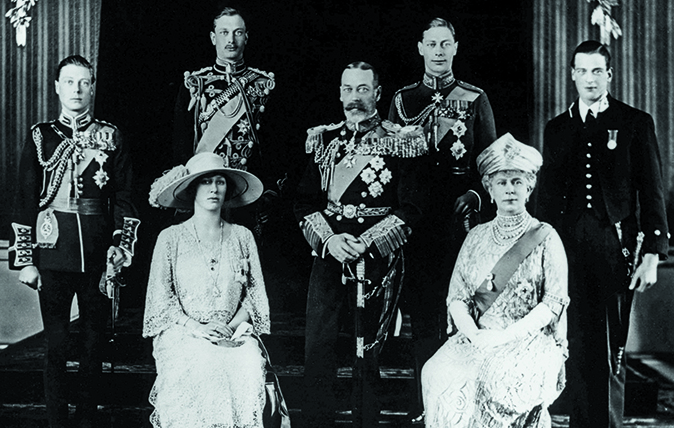From the Great Exhibition to the London Design Festival, Britain has a long tradition of celebrating creativity, says Clive Aslet.
Visit London from September 14 to 22, and you’ll find weirdness and wonder. The 17th London Design Festival is coming to town, with a display that magnifies gemstones to galactic size at Islington’s Collins Theatre and sees the shoppers’ paradise of South Molton Street transformed by wacky and colourful street furniture.
Dotted around the V&A Museum will be 10 artworks, from Avalanche by Matthew McCormick — an introspection on climate change — on the landing of the British Gallery, to This Much I’m Worth by Rachel Ara, reflecting on the history of neon and its use in the sex trade. They’ll be wild, they’ll be vibrant. They’ll also be in the tradition of the V&A, which has its origins in a kind of design festival — the Great Exhibition of 1851.
That pioneer was followed by others — the 1853 Exhibition of Art-Industry in Dublin; the 1862 International Exhibition in London; the Manchester Art Treasures Exhibition of 1857. Of the latter, Prince Albert wrote that: ‘No country invests a larger amount of capital in works of art of all kinds than England, and in none almost is so little done for art-education.’ Yet the Great Exhibition’s permanent legacy lay in the South Kensington estate that the exhibition commissioners bought with the money left over from the project — an astonishing £180,000.
Not everything in the Prince Consort’s vision was realised: the National Gallery did not relocate to South Kensington and the last of the gardens, which had been an integral part of the conception, was sacrificed for Imperial College at the end of the century.
Nonetheless, the South Kensington Museum opened in 1856 (it was renamed the V&A, when part was hived off to form the Science Museum, in 1899), the Royal Albert Hall (1871), the Natural History Museum (1881) and the Royal College of Music (1882).
Exhibitions to display trade and manufactures, wrapped in a celebration of art and design, carried much prestige in the 19th century. Inspired by the Great Exhibition, Napoleon III sought to consolidate his regime and assert France’s place in the world with an Exposition Universelle in 1855. It was followed by others in 1867, 1878, 1889 and 1900. Entry to the 1889 exhibition was via a specially built novelty: the Eiffel Tower.

Construction of the Eiffel Tower was originally for the Paris Exhibition of 1889.
The Exposition Internationale des Arts Décoratifs of 1925 gave its name to the style of Art Deco. Similarly, the White City of the 1893 Chicago World Fair might only have been built of plaster, but its majestic planning established Beaux-Arts classicism as the public face of America’s Gilded Age.
Later, on this side of the Atlantic, the 1951 Festival of Britain not only lifted the spirits of the nation after the Second World War, but introduced a design aesthetic of caprice, ethereality and tapering chair legs that is still imitated.
The London Design Festival has a pedigree, therefore, and much to live up to. Fortunately, Ben Evans, who co-founded the festival with Sir John Sorrell in 2003, has plenty of ambition. ‘It’s important to tell the story of design, something we’re very good at in this country.’
The London festival will create 400 projects across the city, from a sculpture in Broadgate, in the City, made out of hundreds of old scaffolding boards, to Iri-Descent, a work by Liz West that will hover above the atrium of Fortnum & Mason: its 150 skeleton-framework cubes will appear to change colour as shoppers move around it. ‘When we started, five or six cities across the world had international design shows — now there are 150. We’re one of the top two.’

The 1951 Festival of Britain, including views of the Skylon, Dome of Discovery Lion and the Unicorn Exhibition and part of the ‘Power and Production’ display.
What Mr Evans describes as the ‘depth and breadth of the festival’ gives Milan’s Salone del Mobile — a design event in the city centre accompanied by a large trade show outside — a run for its money. It far outstrips other cities, although special mention should be given to Vienna Design Week: imaginatively, the organisers celebrate the Austrian heritage of family-run craft industries, clockmaking being prominent. ‘Not everyone has had the insight to showcase what they’re good at,’ says Mr Evans. London’s strengths are multifarious.
As Claire German, managing director of the Design Centre/Chelsea Harbour that will host Focus/19 observes: ‘London is regarded as one of best cities in the world for good reasons — its diversity, culture, heritage and amazing landmarks to name a few. It’s also one of the most creative global cities, providing a vibrant, sometimes challenging, environment where people are genuinely passionate about all aspects of design.’
The London Design Festival runs September 14-22 — www.londondesignfestival.com
May 24 marks precisely 200 years since the birth of Queen Victoria. The biographer and historian A. N. Wilson assesses
Clive Aslet reports on the evolution of the House of Windsor – through George V, Edward VIII and George VI
The search for privacy and peace encouraged Queen Victoria and Prince Albert to create an Italianate seaside villa. It offers

Queen Victoria: A 200th birthday appreciation of the monarch who left an indelible stamp on Britain

100 years of the House of Windsor: The story of the British royal family’s great rebranding

Osborne House: Victoria and Albert’s Italian getaway on the Isle of Wight




